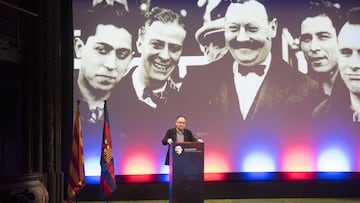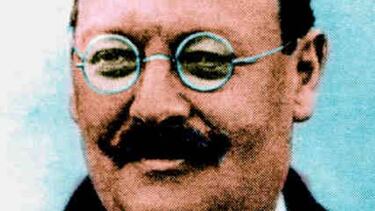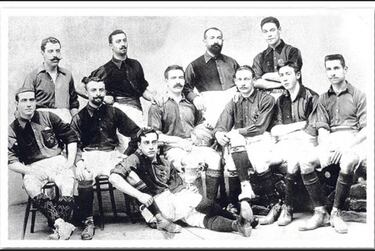The story of Barça founder Joan Gamper, a football pioneer
The Swiss visionary, who founded Barcelona and FC Zurich, is the subject of a new documentary that aired on Monday in the Teatre Romea on the Raval.

It was a taboo subject for generations of Barcelona supporters, and also for Joan Gamper’s family as his great-granddaughter, Emma, reveals in a documentary about the life of FC Barcelona’s founding father that was given its premiere in the Teatre Romea on Monday.
The date of Gamper’s death is officially recognised as July 30, 1930, when the USA and by extension the world was plumbed in the depths of the Great Depression. Gamper, who had been a businessman, an accountant and a journalist after a stellar career in amateur sports, invested heavily in Wall Street stocks convinced there would be an economic turnaround that never materialized, leading him to take his own life.
The documentary, Gamper, L’Inventor del Barça, was conceived by Catalan producer, writer and director Jordi Ferrerons and its first public airing was attended by Barcelona’s hierarchy, with Josep Maria Bartomeu at its head, as well as manager Ernesto Valverde, sporting director Robert Fernández and former coach Carles Rexach among other dignitaries as well as members of Gamper’s family.
Gamper the football pioneer

Ferrerons’ film is based on the fact that little is known about Gamper, beyond the fact that he was Swiss and the founder of FC Barcelona and a co-founder of FC Zurich. That Gamper was “the soul of Barcelona for 30 years” from the club’s inception in 1899 is perhaps even less well-documented. After the departure of legendary goalkeeper Ricardo Zamora to Espanyol it fell to Gamper to steer the club forward against the tide of professionalism, which was anathema to Gamper but as unavoidable as the club’s eventual move from its original home, Camp de la Indústria, to the Camp de Les Corts in 1922 during his fourth stint as club president.
Gamper was an accomplished athlete in the amateur era who held Swiss national records in the 800m and 1,600m and was a cyclist who was also often seen on the rugby pitch and the tennis court. As a footballer he represented FC Zurich as the first club captain and played a handful of games for other nascent sides in Switzerland before leading Barça’s attack in its formative years as a prolific forward.
The birth of the famous claret-and-blue shirt

Gamper is also responsible for a historic decision that colours Spanish football to this day. When forming Barcelona he decided not to use the same all-white strip as Zurich but to adopt the same claret-and-blue shirt as FC Basel, another club he represented.
When he arrived in Barcelona, Gamper carried his birth name with him, Hans Max Gamper-Haessig, but swiftly adopted a local equivalent as he embraced Catalonian culture. “Gamper imagined the model of a democratic sports institution, he understood the significance of Catalan identity and of sport and homeland,” said Barça president Bartomeu at the screening.
Regional tensions and sport collide

Related stories
Gamper, L’Inventor del Barça records an episode that took place on June 14, 1925. A friendly match was organised between Barça and Jupiter in homage to the Orfeó Catalá, a choral society founded in Barcelona in 1891. Members of the British Royal Navy’s Mediterranean Fleet, which was anchored in the city’s port, were invited to attend. Before the game the British and Spanish national anthems were played, the latter drawing jeers from some of the spectators. Barcelona’s civil governor, Joaquín Milans del Bosch, reported the incident to Spanish dictator Miguel Primo de Rivera, who immediately ordered FC Barcelona to be shut down for six months.
Gamper, tired of political pressure as the documentary notes, decided to leave Barcelona. Years later he returned to his flat in the city’s calle Girona and embarked on his ill-starred attempt to second-guess the economic winds blowing across the Atlantic from New York.
